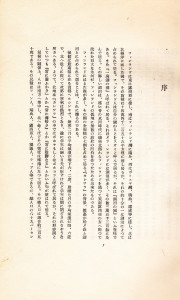Kakutan Morimoto 1937
The differing opinions of Kakutan Morimoto and Tamotsu Koizumi can be seen particularly in how the metrics and rhetoric has been implemented in the texts translated to Japanese. The structure and style of the languages have a considerable influence on how the text functions in the source language and how it transforms into the systematics of the target language. When you translate you have to find forms that, with regard to the content, corresponds to the source language. However, all metric and rhetoric techniques of the source language cannot be conveyed into the translation.
The musical Karewara
In the Kalevala, the poetic meter and the eloquence of the texts are the most important characteristics of the poetic language. The musicality of the poems stems from the alliteration and the trochaic tetrameter, the repetitions and exaggerations, on the other hand, it adorns the plot in the story. Morimoto strives for musicality in his Japanese translation in order to implement the central characteristics of the Kalevala in the translation as well.
“Above all, the translation by Morimoto of the Kalevala is, not only uncomplicated, but also smooth. The text itself makes the alliterations come alive and lets us enjoy the poetic songs” (Ichikawa, Yomiuri-shinbun 25.6.1937).
Ramsted has stated that in many translations of the Kalevala, the structure of the source language, its melodicism and the volume of vowels is lost. Also, from the listener’s point of view, the alliteration and other rhetorical expressions, that are of utmost importance, fade and the only thing that is left is the meaning of the text. Nevertheless, Morimoto has overcome these difficulties very well.
Morimoto’s goal to preserve the musicality of the Kalevala had much to do with his overall approach to literature and music: he had studied the relationship between western literature and music and how the literary artistry could be seen in music. He had learned to know the Kalevala through Sibelius’ music. In the Japanese translations of the Kalevala, studying the art of the written word and music has helped the translator to make the alliterations work in the systematics of the target language. Nonetheless, implementing the musicality has not meant that the translation is done using the Kalevala meter, in other words the trochaic tetrameter, in the translation, but instead the musical and song-like smoothness has been created with the end rhyme and by repeating certain words.
Hiroko Suenobu ja Jun Igarashi: “Kalevala japaniksi” – Kalevala maailmalla. Helsinki: SKS. 2012.

